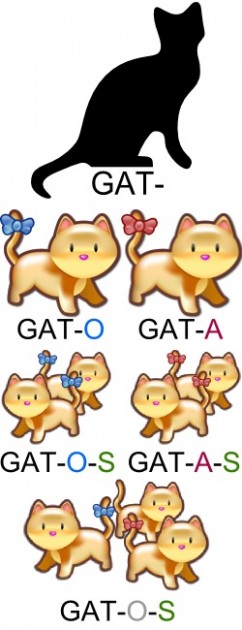Inflections, Noun Cases, and Other Horrors of Grammar

English is generally agreed to be one of the more difficult languages to learn, mainly because of its arbitrary way of pronouncing different combinations of diphthongs and vowels. (For example, “rough” versus “through,” and so on.) However, something I’ve always been grateful I haven’t had to deal with as an English speaker are noun inflections. With the exception of a few odd ducks like “goose,” “mouse,” “moose,” “sheep,” “man/woman,” and “child,” virtually the only change English nouns undergo are to add an “s” or “es” to the end to denote a plural. In fact, our verbs have a relatively low level of inflections as well; while verbs of many western languages have a unique conjugation for each person in each tense, English manages to scrape by with just one conjunction each for regular past and future tenses. (Ex. I/you/he walked and I/you/he will walk.) Even for the present tense, plural verbs are generally the exact same as the infinitive of the verb, while to create a present singular, all you have to do is add an “s” or “es.” (Ex. I/you/we walk and he/she walks.)
So what is an inflection? It’s when a word is changed to express a certain grammatical idea such as tense, gender, case, number, person, and so on. For most native English speakers, they first encounter inflection of nouns and adjectives according to their grammatical roles in a sentence while studying Latin. A highly inflected language (which has influenced Romance languages in terms of verbs and adjectives,) Latin has three genders that can impact a word’s ending (masculine, feminine, and neutral,) and six grammatical cases: nominative, genitive, dative, accusative, ablative, and vocative. What this means is that a noun, such as nauta (sailor) can have a different form depending on what part of the sentence it’s functioning as:
Nominative (subject)—nauta
Genitive (possessive)—nautae
Dative (indirect object)—nautae
Accusative (direct object)—nautam
Ablative (object of preposition)—nautā
Vocative (object of an address)—nauta
All these parts of speech are also present in English, but we usually don’t have any special inflection to distinguish them, aside from adding an apostrophe-s to denote possession (ex. the sailor’s). Interestingly, Old English utilizes noun inflections and has a case system similar to modern Icelandic or German. In Old English, nouns are divided into strong—such as engel (angel) and sorg (sorrow)—and weak—such as nama (name) and tunge (tongue). Nouns then had four different possible declensions, (nominative, accusative, genitive, and dative,) and had different rules for each according to whether it was strong or weak.
 Other highly inflected languages include Russian (its six different noun declensions have been frustrating my attempts of learning it for years,) Sanskrit (seven noun declensions,) and Tamil (eight noun declensions). But the winner in terms of sheer awe-inspiring complexity of noun inflection has got to be Hungarian, a language that has 18 possible different cases, which adds up to every noun having 238 possible endings.
Other highly inflected languages include Russian (its six different noun declensions have been frustrating my attempts of learning it for years,) Sanskrit (seven noun declensions,) and Tamil (eight noun declensions). But the winner in terms of sheer awe-inspiring complexity of noun inflection has got to be Hungarian, a language that has 18 possible different cases, which adds up to every noun having 238 possible endings.
So why bother with inflections at all? They can be a pain to memorize for non-native speakers, but they can provide for greater freedom in terms of sentence structure. For example, while English is nearly always restricted to SVO word order—“The man looks at the dog,” cannot be interchanged with “The dog looks at the man,”—inflected languages like German or Russian can shift around subjects and objects much more easily, depending on where they want to place emphasis; “Der Hund sieht den Mann,” or “Den Mann sieht der Hund,” are both grammatically correct. This can give writers greater license when it comes to poetry, as well as greater precision when speaking or expressing an idea. So next time you’re feeling frustrated with all the complicated grammar rules of English, just think of Hungarian!
What other inflected languages can you think of?
